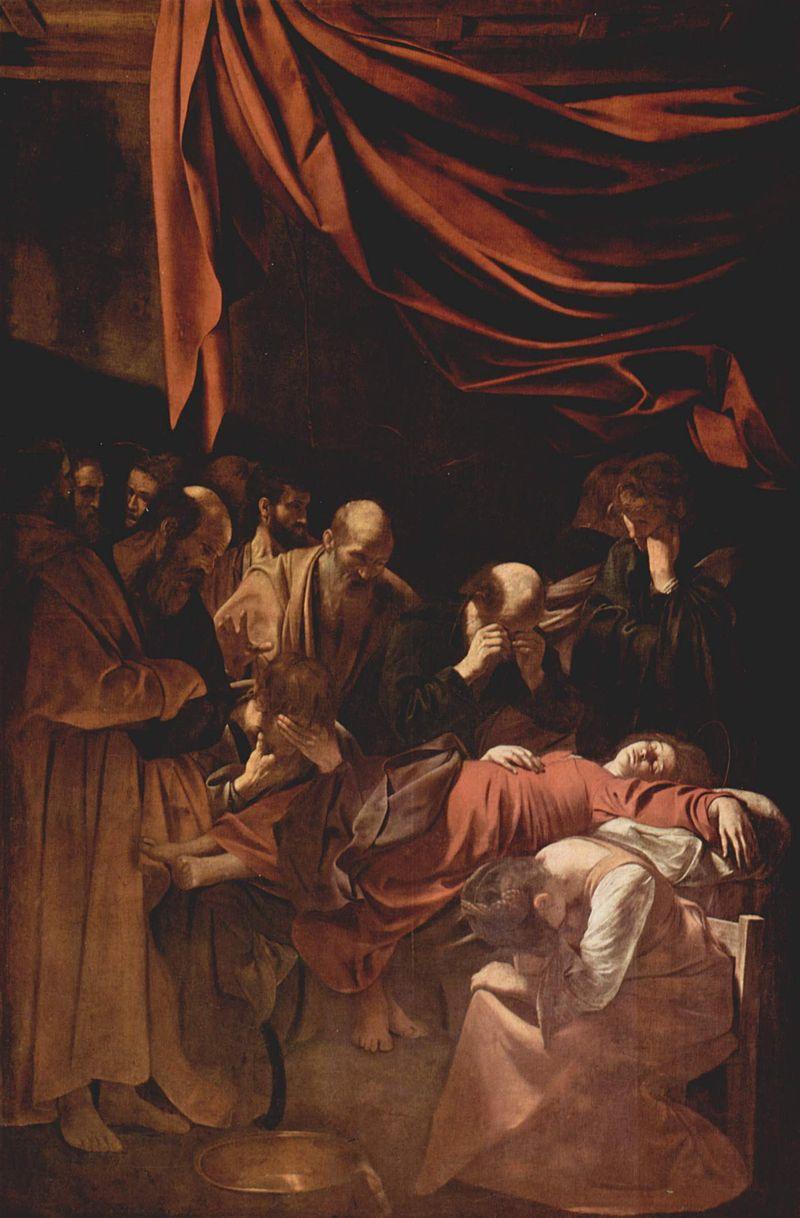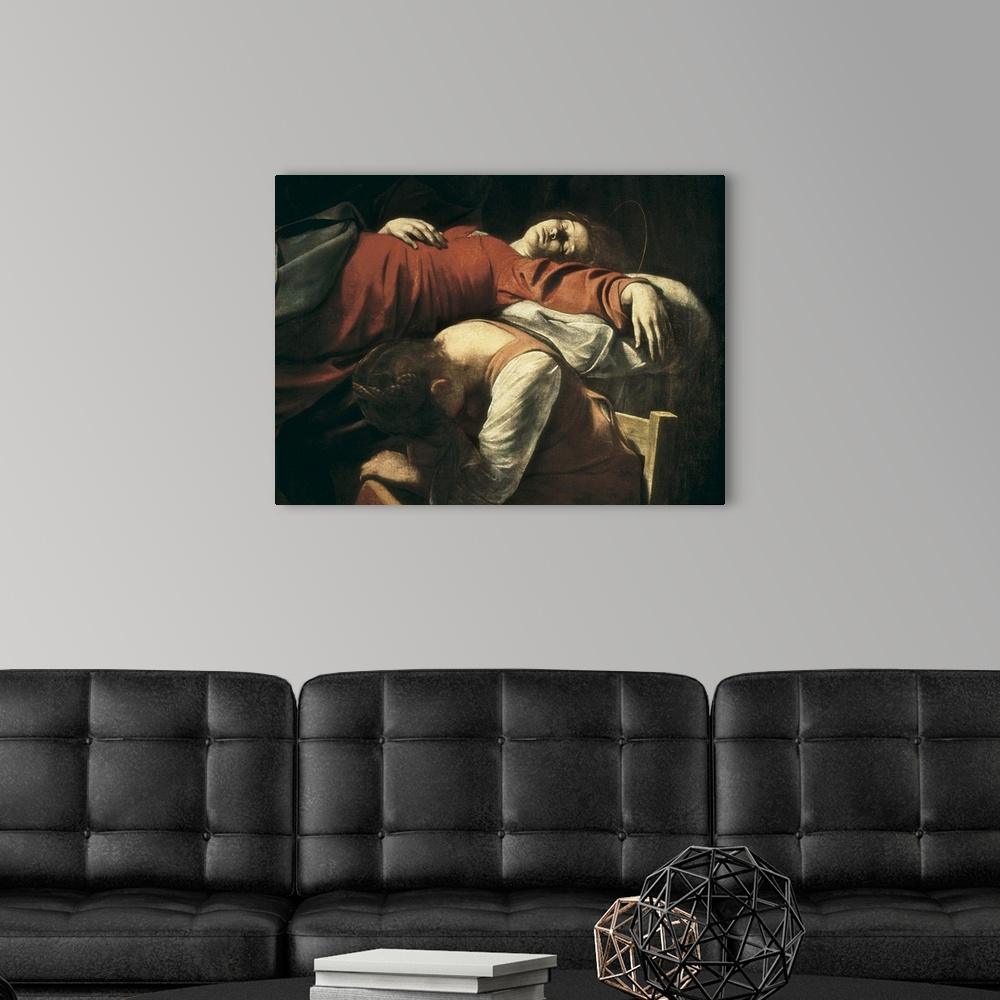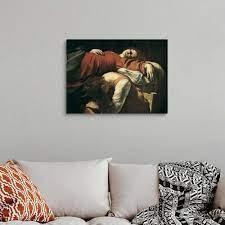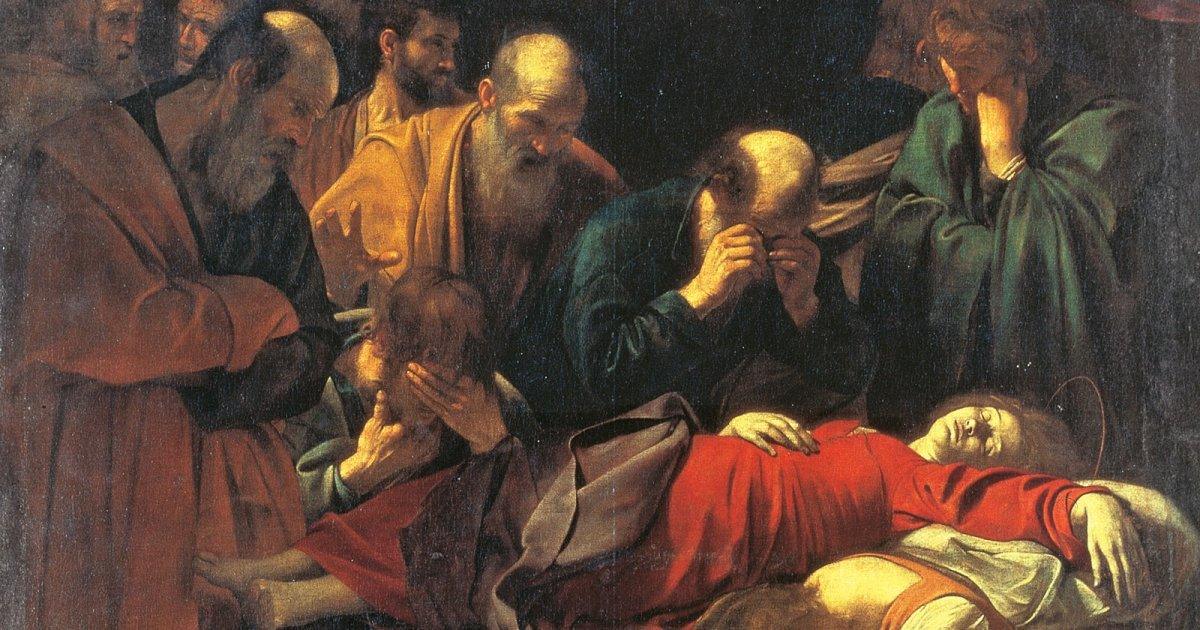Description
Soft light falls from high left to a death scene.
The dead woman in the center is surrounded by mourners. She is the Virgin Mary. The focus is on her: she forms the only horizontal in the group of figures and is the only one not cluttered by the rest; his is the only fully revealed body, and his fragility and weariness contrast with the vitality of the apostles, even if dominated by their pain; and only she is fully enlightened. The light, softened by the atmosphere and by the handling of the pigment, strengthens the silent solemnity of the scene.
Caravaggio here follows the tradition that the apostles who were scattered preaching the gospel, who were miraculously transported to their deathbed. There is a woman in the lower right who is crying; his face hidden in pain. There is a copper bowl at his feet as if to wash the corpse. She resembles María Magdalena as shown in "El Entierro" from a few years earlier.
Similarly, the figure on the left is probably Saint Peter. Next to him, the kneeling apostle may be Saint Andrew. Just behind him, the figure whose right hand is raised could be Saint Paul. The man with his fists over his eyes may be Saint Matthew, and the figure standing to the right, Saint John. The more these figures are observed, the more their deep pain is felt.
Very often, Caravaggio used his hands to express what a character was feeling. It is important to remember that Caravaggio would have posed his models very carefully and then painted what he saw. He had access to the collections of his patrons and, in particular, to the huge collection of sculptural antiquities of the Marquis Vincenzo Giustiniani, in which there were numerous deathbed scenes. In fact, Giustiniani, who would have seen Caravaggio in action, wrote that Caravaggio adapted poses from ancient statues to convey thoughts and emotions. Saint Peter's hands are wrapped in his mantle. This is the gesture of a speaker as he prepares to speak. But it is also reverent.
Saint Paul's raised hand may represent a call to silence. There is certainly a sense of stillness as the light falls on the deceased Virgin. She looks rigid with her feet spread but her face is at peace and although her hall is that of death she may be asleep. His hands are arranged like those of someone asleep.
Nobody has put their hands on his chest as they normally would. The realism is surely unprecedented. It's like he just died. The feet of the apostles are bare but they are heavily clothed. The weight of their garments seems to add to their overwhelming pain and gives them a timeless monumentality.
The dead Mary appears lying on her back wearing a simple red dress. His plain appearance, lifeless head, dangling arm, swollen body, and swollen feet leave us in no doubt of Caravaggio's commitment to naturalism and a more realistic depiction of Christian imagery.
The emotional and physical rawness of the painting is not relieved. The room is bare, stripped not only of rhetoric but also of superfluous detail. Caravaggio allows no hint of ritual, not even the usual sacramental censer and candle, and only two touches of domesticity: the handsome, somber copper pan at the foot of the coffin and the large red draped swag that fills the ceiling space.




